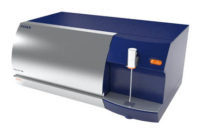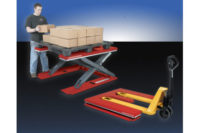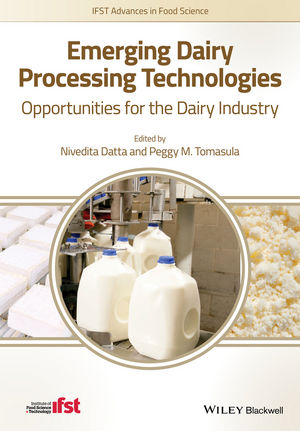
Getting Easier Being Green
by Shonda Talerico Dudlicek
Contributing Editor
Suppliers continue making strides with environmentally friendly packaging.
Buzzwords
like “sustainability” and “green” are getting
tossed around a lot lately. We interviewed some notable players among
packaging manufacturers to get their input on how they view the arena of
environmentally friendly packaging.
DF: What are the latest technology and trends in
packaging in the area of environmentally friendly packaging?
Oliver Bittner, vice president of marketing, SIG
Combibloc Inc., Chester, Pa.: Feedback
from the market indicates that environmentally friendly packaging has
become one of the key aspects in the packaging decision. There are several
observable trends in this debate. Packaging that is made of natural,
renewable materials that are biodegradable is clearly preferred. Secondly,
trends focus on reducing excess and unnecessary packaging. Thirdly, there
has been a lot of debate about the “ecological footprint” of
packaging.
This year has shown several improvements in the area
of environmentally friendly packaging. One of the most important
achievements is that the environment has become an integral part of the
packaging decision. Also, recent market launches show a significant
increase of environmentally friendly packaging.
The environment is an integral part of SIG
Combibloc’s business and one of the unique selling features that
differentiates aseptic carton from other pack types. Aseptic cartons by
their nature come from a renewable resource, and packaging including the
spouts can be 100 percent recycled and reused in other materials. Important
to mention here is the fact that exclusive use is made of sustainable
forestry for its packaging. Also, aseptic cartons clearly outperform other
types of packaging materials over their entire life-span.
Giovanna Prestes, marketing and communications
manager, Tetra Pak Inc., Vernon Hills, Ill.: Packaging
is being closely scrutinized for its environmental impact and the material
content of non-renewable resources. This is a hot topic with manufacturers,
retailers and consumers. There is a growing sentiment about the precarious
position the world is in due to its reliance of non-renewable resources. As
a result, awareness is growing of why it is better to minimize the use of
scarce resources versus relying on recycling alone. Tetra Pak has long
understood this social responsibility and our motto —Protects
What’s Good — was designed to incorporate our package design
mainly made from renewable resources.
The industry is becoming more aware of sustainability
issues, looking for alternatives that deliver the same quality product but
in a more environmentally friendly way.
Tetra Pak believes food packaging should save more
than it costs. This extends to the environment as well as to the products
inside. It’s all about being better for the environment and better
for business.
Use of renewable resources, reducing effects on
climate change, minimizing energy use and supporting recycling are just
some of the areas in which Tetra Pak focuses its sustainability efforts.
Although no packaging yet is fully sustainable, Tetra Pak is committed to
being a leader in sustainable packaging. Tetra Pak cartons come primarily
from a natural and renewable resource and are recyclable; nearly 50 million
consumers can recycle their cartons in curbside programs today. Our cartons
are 70 to 81 percent paperboard, which comes from wood, a natural and
renewable resource grown in responsibly managed forests. Tetra Pak packages
use less material and are among the lightest on the market, which makes
them cost-effective for manufacturing, shipping and storing.
Carl Rooth, vice president, category director for
foods and beverages, Owens-Illinois Inc., Perrysburg, Ohio: The glass container industry continues to develop and refine
technologies to improve the performance of its products. Light weighting
plays an important role in making a sustainable product because energy
consumption during the manufacturing process is proportional to the weight
of the container. Surface treatment of containers is another technology
that has contributed to light weighting opportunities. In its most pristine
form, glass is stronger than steel. But it is brittle and surface abrasion
can affect its strength. Therefore, coatings and surface treatments are
current R&D focuses to help protect and prolong the inherent strength
of glass. In addition, the use of organic base materials for decorating and
labeling, which are heavy metal free, are also a growing area.
Paul Pritchett, sales and marketing
manager, Seal-It Division of Printpack, Farmingdale, N.Y.: Seal-It is very proud to be among the first shrink
label converters to be able to introduce Plastic Suppliers’
Earthfirst PLA film to our customers. This alternative to petroleum based
film allows us to offer a choice of film for all our customers’
packaging needs. Tamper-evident bands and shrink labels can now be
compostable and environmentally friendly when produced with corn-based PLA
film. PLA film has all the properties of our traditional shrink film and
performs as well. Printpack’s initiatives regarding sustainable
packaging include a family of sustainable packaging structures called
Natura. These products are being offered to many market segments. In
general, flexible packaging can provide an excellent opportunity for source
reduction when converting from other formats.
DF: What do consumers want from environmentally
friendly packaging?
Bittner: Today’s
consumers are more and more environmentally aware and try to make
environmentally conscious decisions that fit their lifestyles. Consumers
clearly feel like contributing provided that several conditions are met. It
is important to communicate to consumers as to how a particular packaging
can be considered environmentally friendly. Also, providing clear
instructions and incentives as how to recycle appropriately helps the
consumer to identify immediately where his/her actions are needed and how
they can contribute. Lastly, the convenience aspect is uncompromising. This
means that packaging has to score high on both convenience and being
environmentally friendly to really take of and be a success. In the case of
aseptic cartons, consumers are aware of the positive impact on the
environment. In addition, the high convenience factor of cartons allows
consumers to contribute to the environment without making
sacrifices to their lifestyles.
Prestes: Consumers are
going green, and their purchasing habits directly reflect this trend.
Reports demonstrate this segment is today a $227 billion domestic market
for goods and services focused on sustainable living and social
responsibility. These are the consumers, in other words, who are eating
organics, driving hybrids, and buying fair-trade java. And there are 63
million of them out there, comprising 30 percent of the American market.
This market is willing to spend up to an astounding 20
percent premium on clean, green products over the non-sustainable
alternatives.
Over the next 20 years, this group is going to grow
exponentially. With two huge generations dominating America — the
baby boomers and the millennials — principles of conscious
consumption are sure to dominate future purchasing decisions. This new,
evolving mindset will carry with it a direct penalty for companies
reluctant to meet their needs.
Pritchett: Consumers are
more aware of the environmental effects of packaging then ever before.
Sustainable packaging is more than a buzzword. It is vital to the health
and safety of all people. Producing packaging that meets these needs is a
major business goal for Printpack.
DF: What are dairy processors asking for in
environmentally friendly packaging?
Bittner: Dairy processors
are looking for a package that satisfies the requirements of being a
convenient, environmentally friendly and attractive packaging. Especially
regarding value-added and functional product concepts, dairy processors are
looking for a package that fits the product in terms of attractiveness and
offers an excellent shelf presentation. Aseptic cartons offer dairy
processors the opportunity to clearly differentiate their products on the
shelves and create an outstanding fit between an appealing product concept
and being environmentally friendly.
Prestes: The
industry is becoming more aware of sustainability issues, looking for
alternatives that deliver the same quality product but in a more
environmental friendly way as we’ve mentioned before. And it’s
not different within the dairy industry.
Pritchett: Dairy
processors are concerned that they meet the needs of consumers and are
looking toward alternative packaging for their products. They are looking
for converters and printers who are taking an environmental approach to
the manufacturing process as well as the product that is produced.
Shonda Talerico Dudlicek is a freelance journalist and
a former managing editor of Dairy Field.







